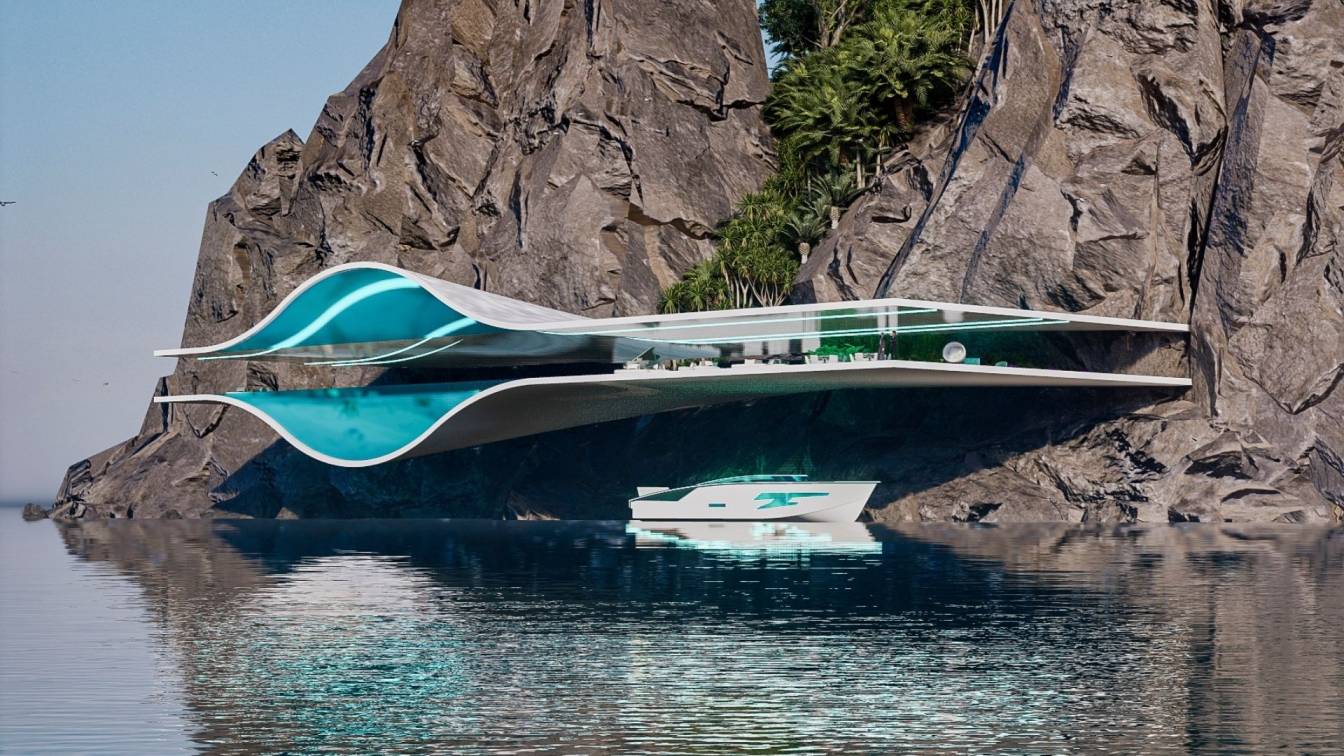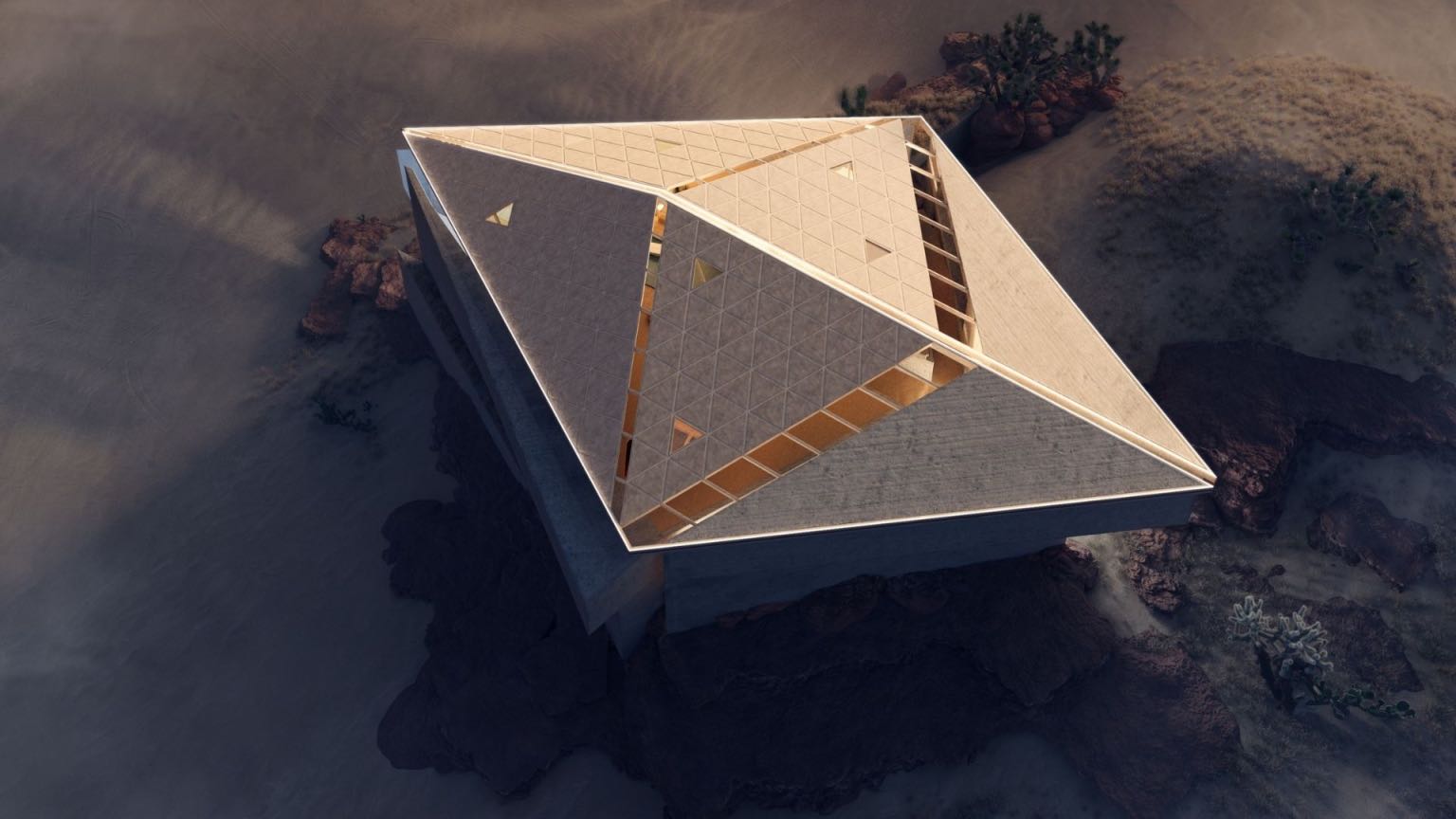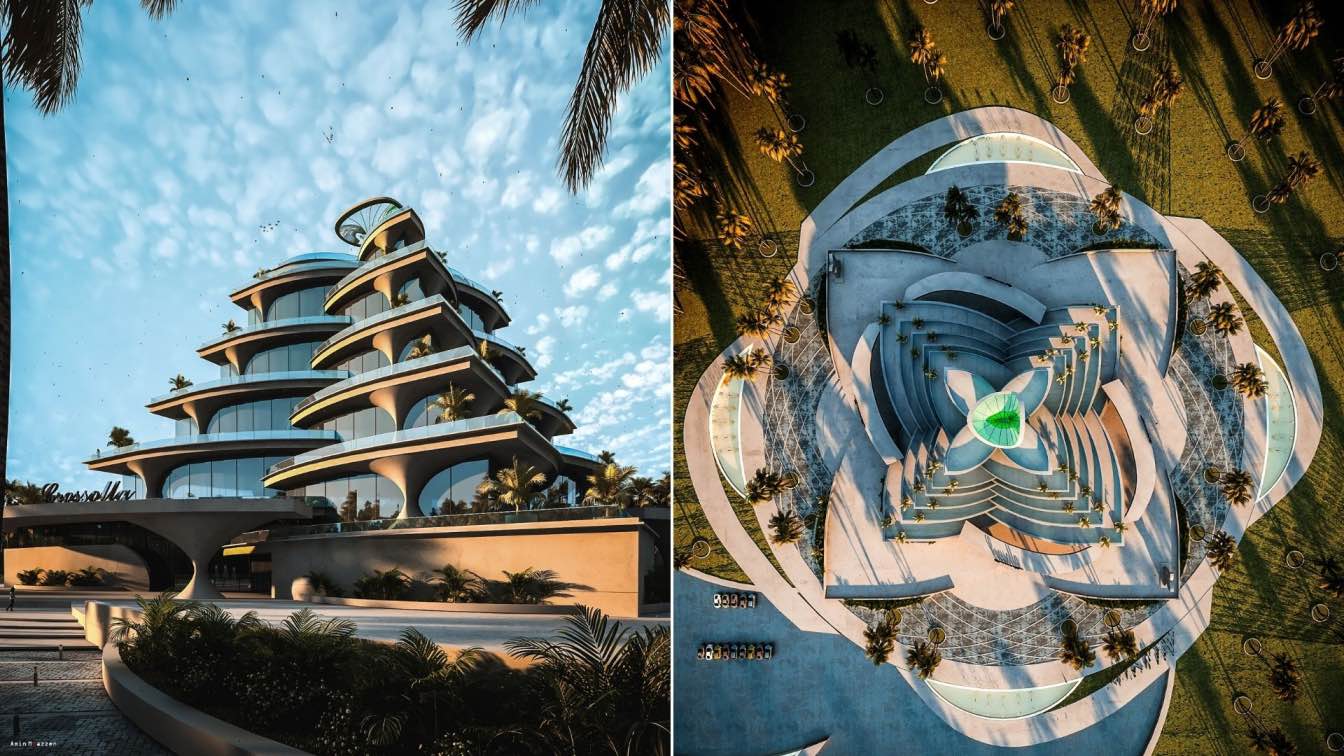KRAK. architects: A crooked line engraved in the Southern Cretan landscape. In the Southern part of Crete is designed by Konstantinos Stathopoulos the unique leisure residence Casa Katana.
The idea was inspired by the unique morphology of the plot and the particular characteristics of the site, the rock formations, it’s orientation and views. The start was made by closely observing the parameters of the site and asking the right questions. Τhe main factors that influenced the architectural synthesis are the landscape and the southern mediterranean beauty, the views towards the Libyan sea and the climate conditions. In the above factors are added the contemporary needs and amenities that a modern dwelling may possess in order to constitute a state of the art contemporary structure.
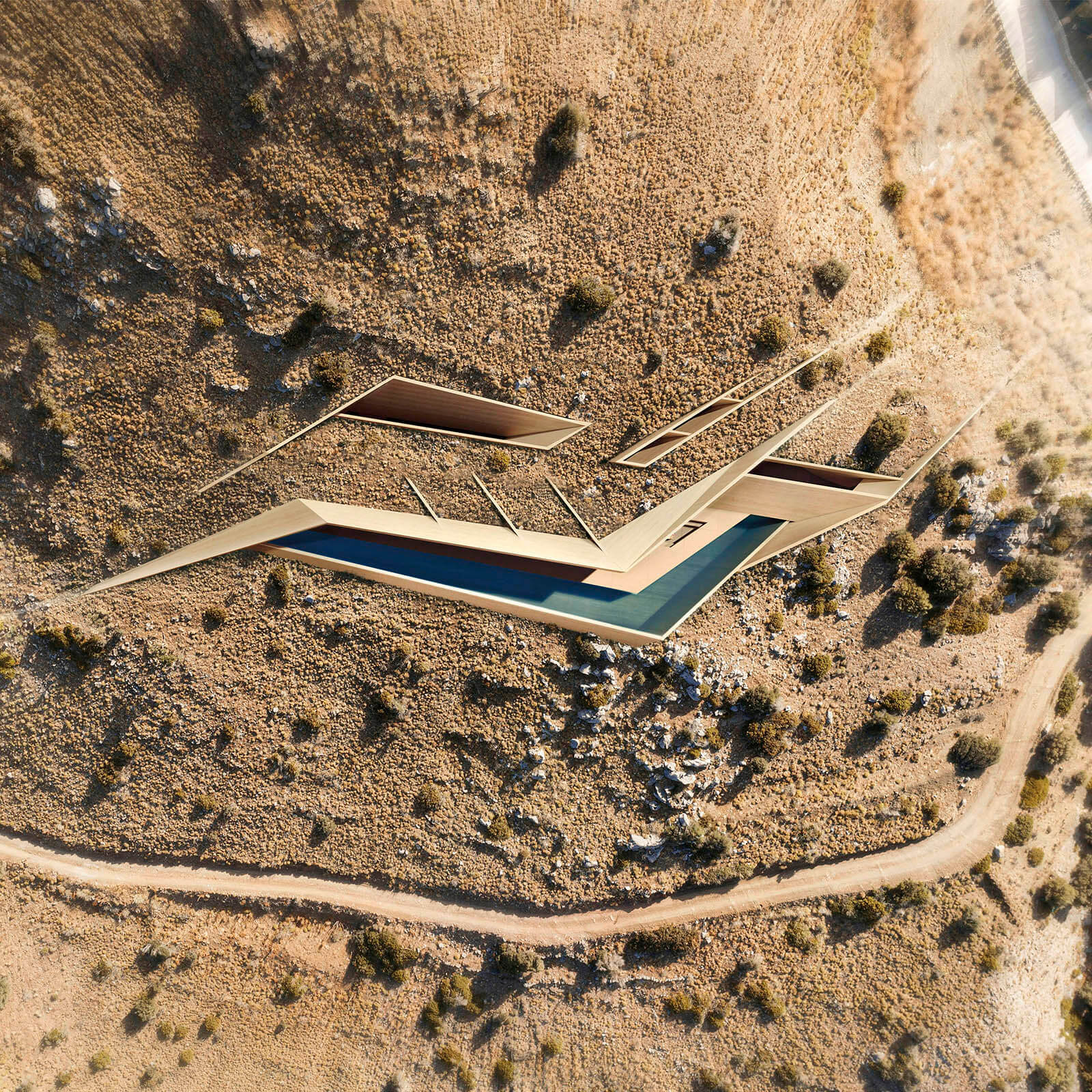
One of the main concerns was the residence to be fully integrated in the landscape, living untouched the beauty of the plot. Towards this direction, after lots of sketches, the idea came up in the form of a soft crooked line made by a fleeting watercolour monocondyle. This gesture was developed and engraved in the plot resembling the mark of a sharp yet gentile cut from a Katana sword, thus gave its name Casa Katana.
The movement and sharpness of this crooked archetype takes shape in the form of a continuous concrete blade that delimits the borders of the residence and provides a broader view in two basic directions. All the elements of the composition are constructed in accordance to this crooked trace that acts as the backbone of the residence. The components are designed dynamically in concern of the North west winds that take place in the region and they are sized in a harmonic ratio that provides motion to the whole composition and gives the feeling of a futuristic yet minimal structure. The building has an overall aerodynamic form as it was sculpted from the local winds for years taking a natural in- clination towards East.
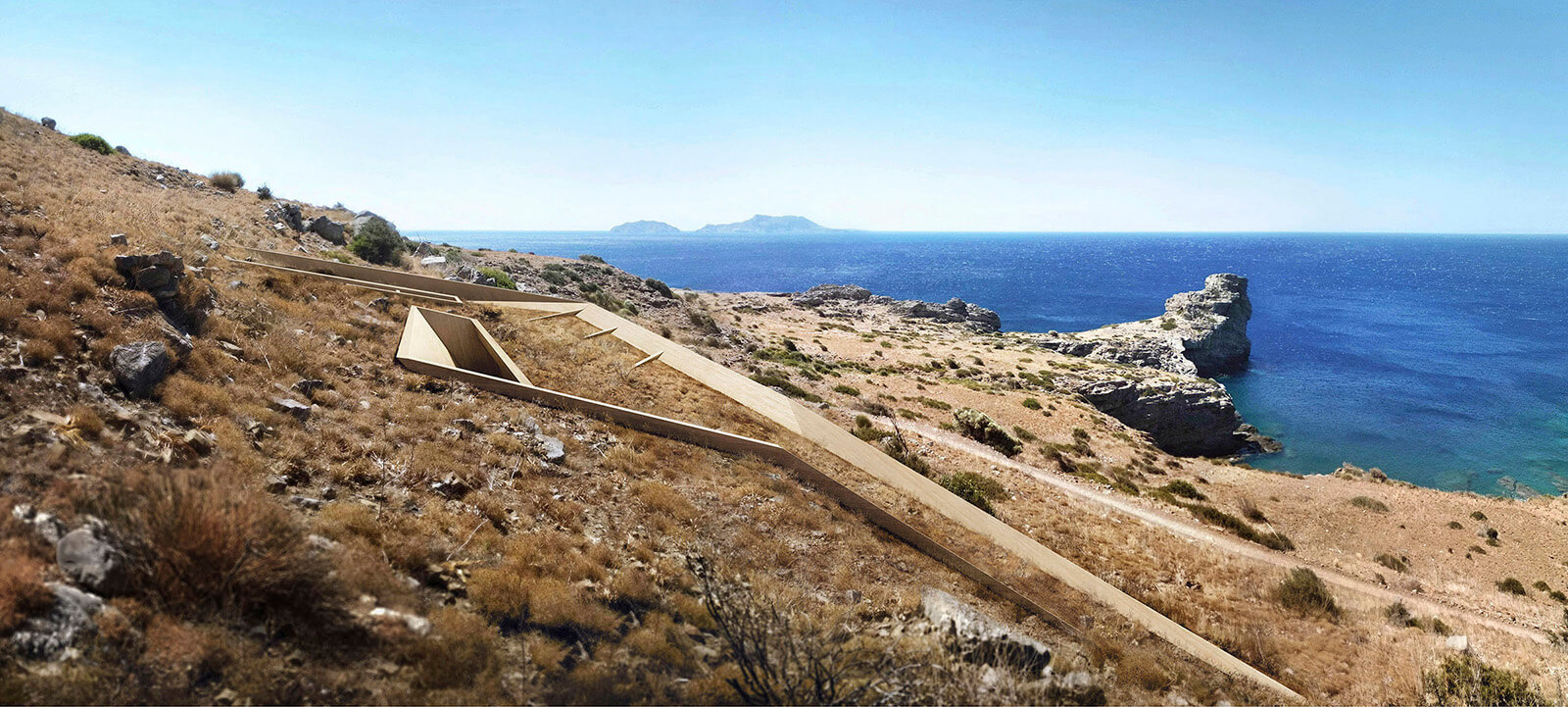
Casa Katana is carefully placed above the rock formations of the site and high enough to provide unobstructed views and privacy at the same time. In order to present excellent thermal and sustainable behaviour is partially underground and carefully studied according to the mediterranean-North African climatic conditions, sun light movement and orientation. Natural light and ventilation are being filtered carefully giving a natural feeling and well being to the habitants.
The basic Material is a coloured concrete mixture composed with local aggregates. It’s surface is treated to resemble the palette of the landscape and the texture of the rocks . Αt the same time it provides durability, low embodied energy and minimum possible maintenance. In addition the coloured concrete contributes in a monolithic feeling and aesthetic to the structure giving a cave sense to the habitant.
The user approaches the building from the underground, the entrance is transferring the user to the interior where a play of light and shadow unfolds in an experience of discovering. Following the trail of the slab, the living areas and the rooms are revealed, offering stops and views. Since the Cretan climate promotes an outdoor living a large part of the house is dedicated to the outdoor and semi- outdoor spaces in an open layout. Window frames open up to a logic of a semi-outdoor transition so that the whole house operates passively during the summer months.
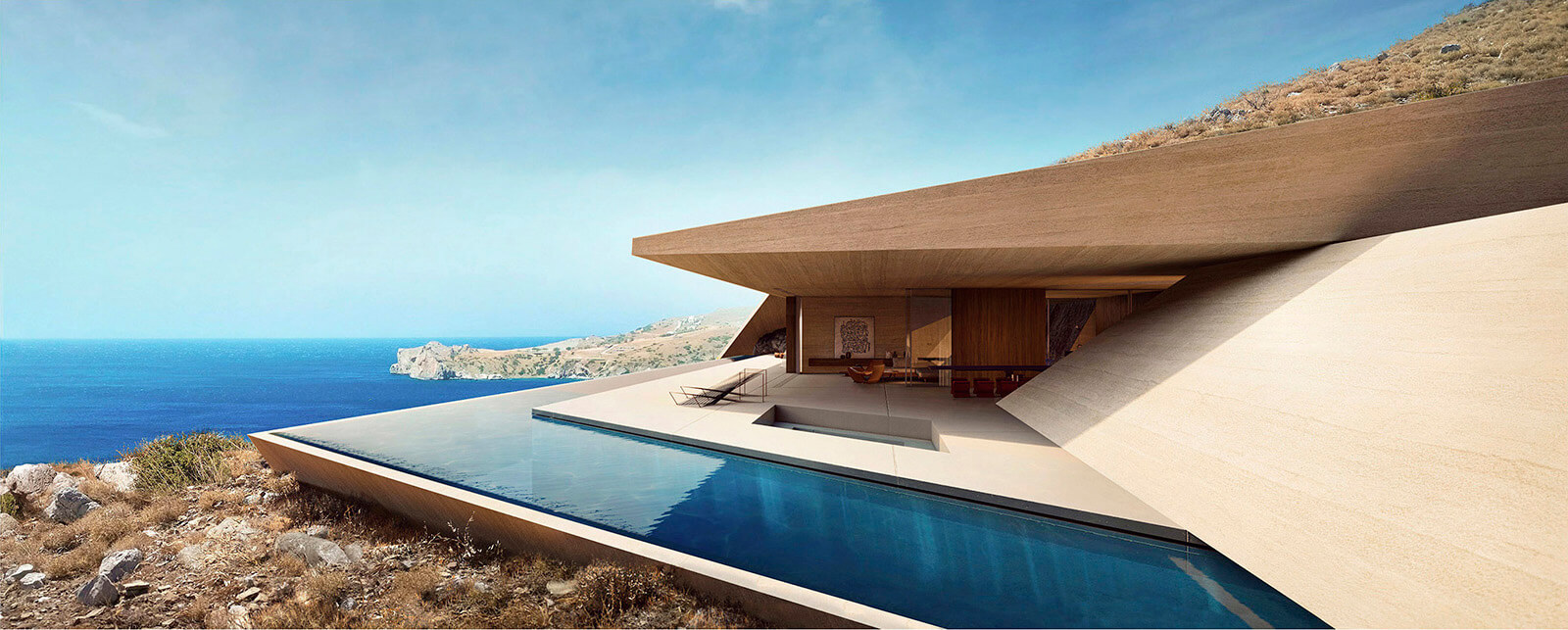
The habitant is urged to live and explore the natural beauty of Southern Crete combined with a unique architectural experience. The challenge in architecture is to design a residence that combines reason and dream.
A residence must possess the functional character according to the rules of building and bioclimatic design but at the same time must be able to speak to the human soul.
Casa Katana is a refuge in the landscape made of the myths and the soil of the Cretan land. As if it were made to live in its bowels a Minotaur and the engravings of movements, like another thread of Ariadne lead your way inwards and from there back out towards the light of the Libyan Sea.
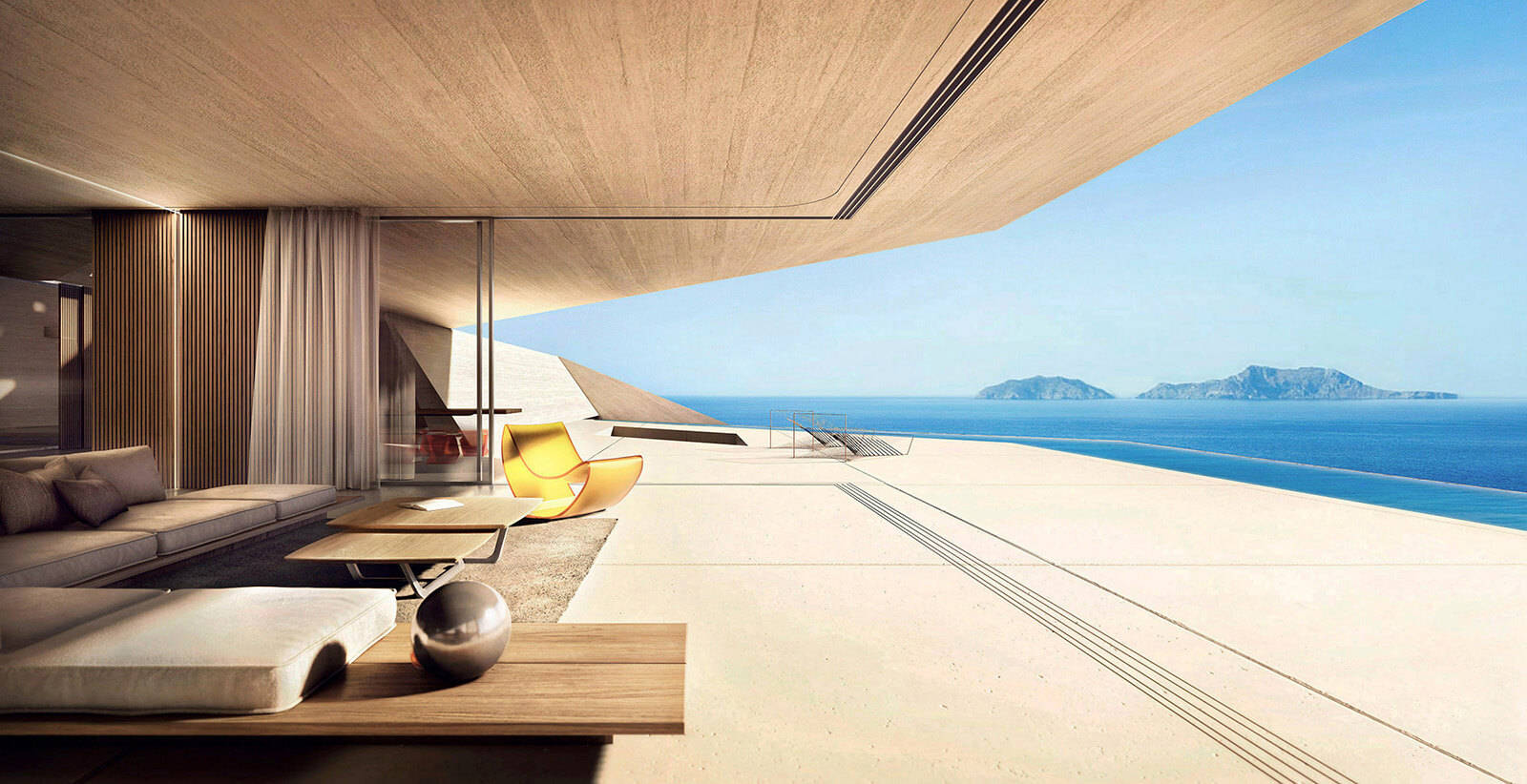
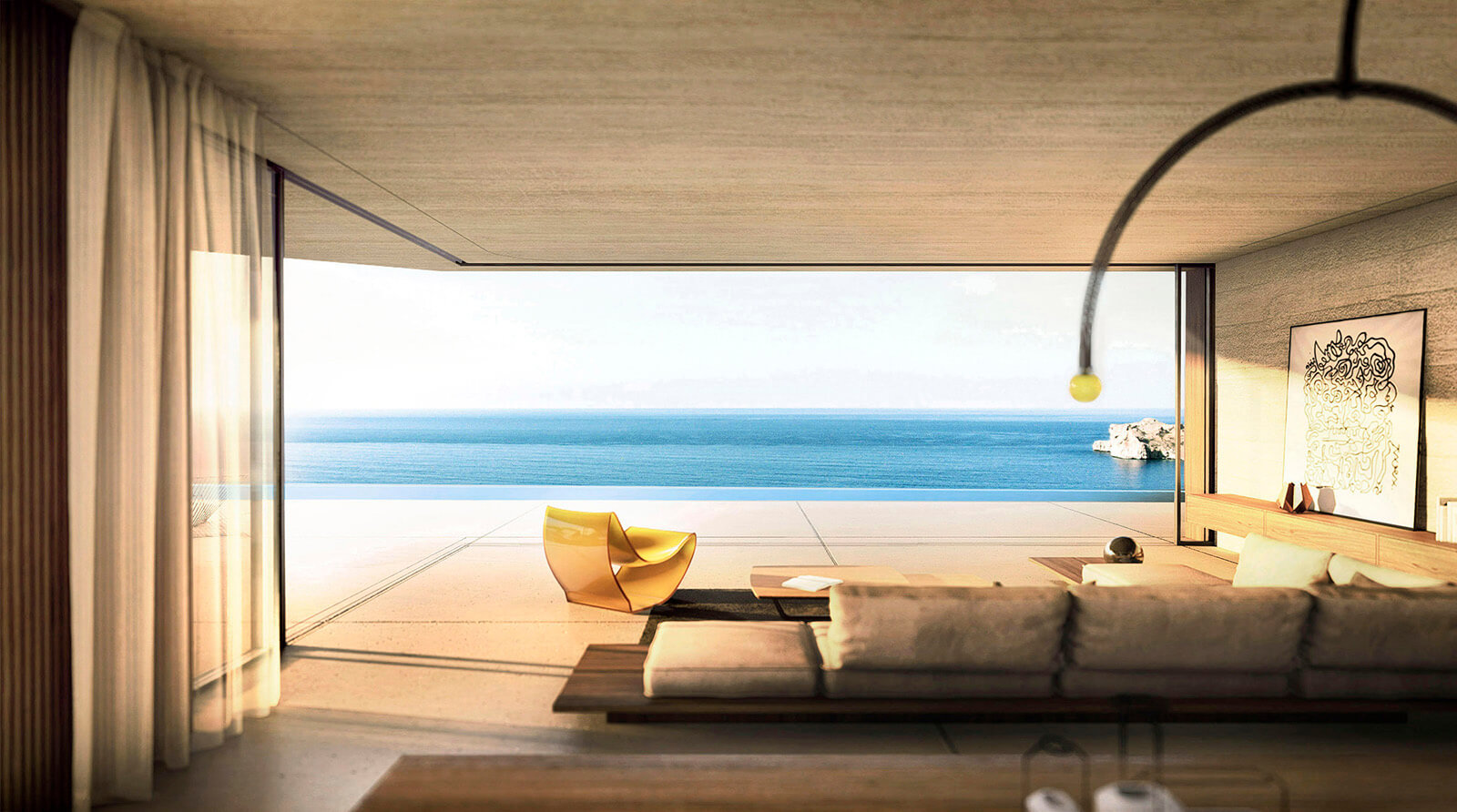
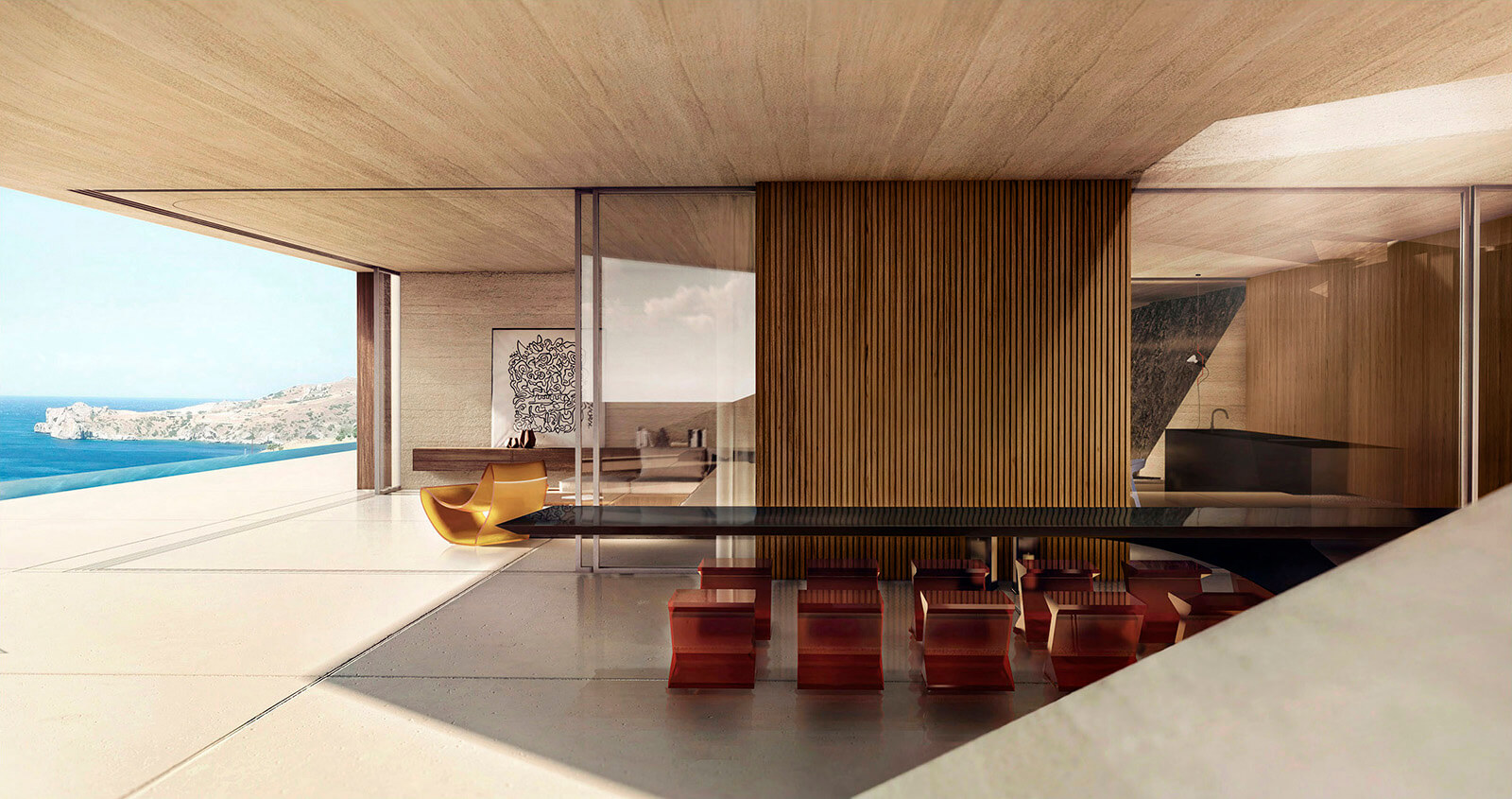

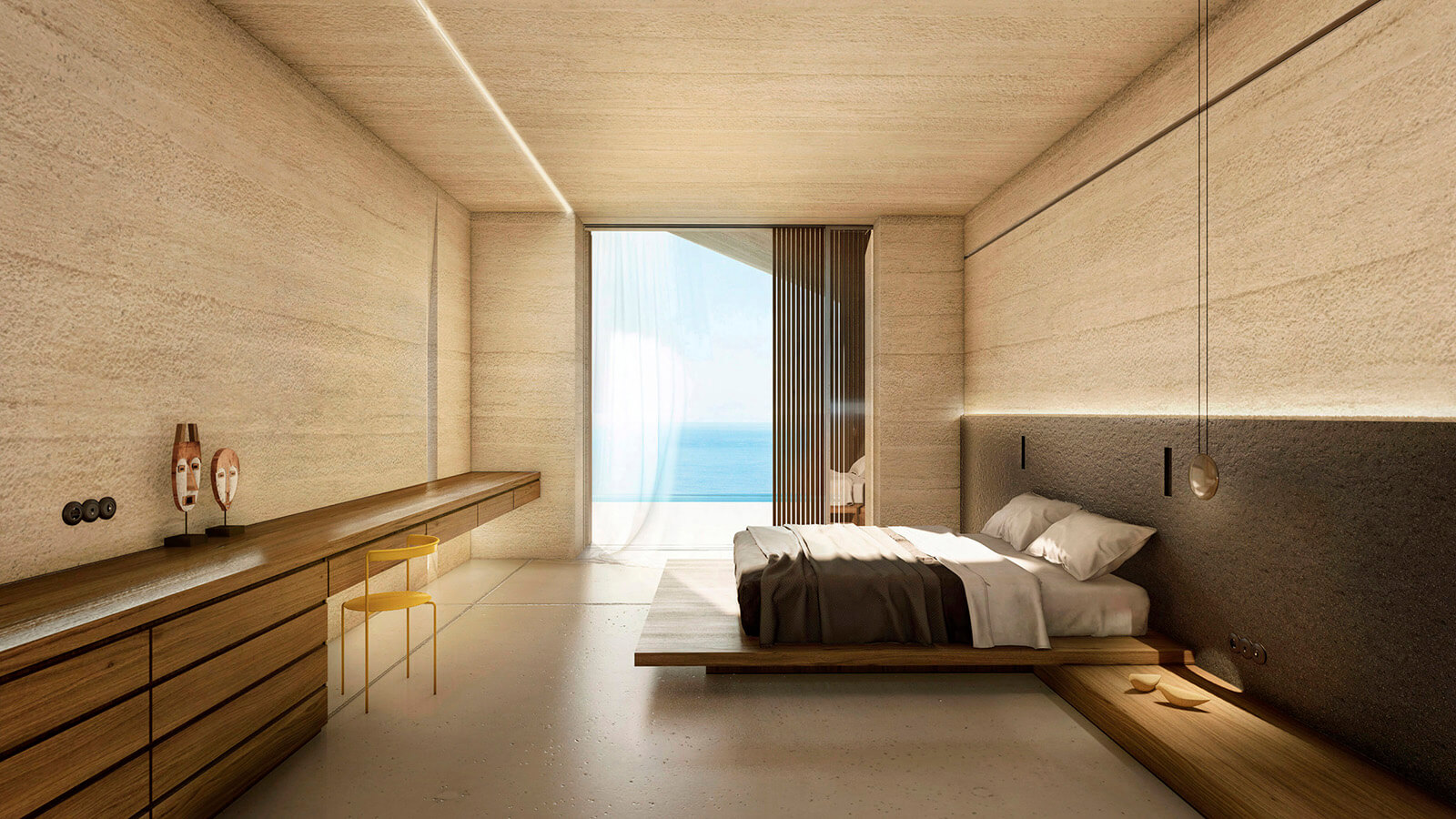

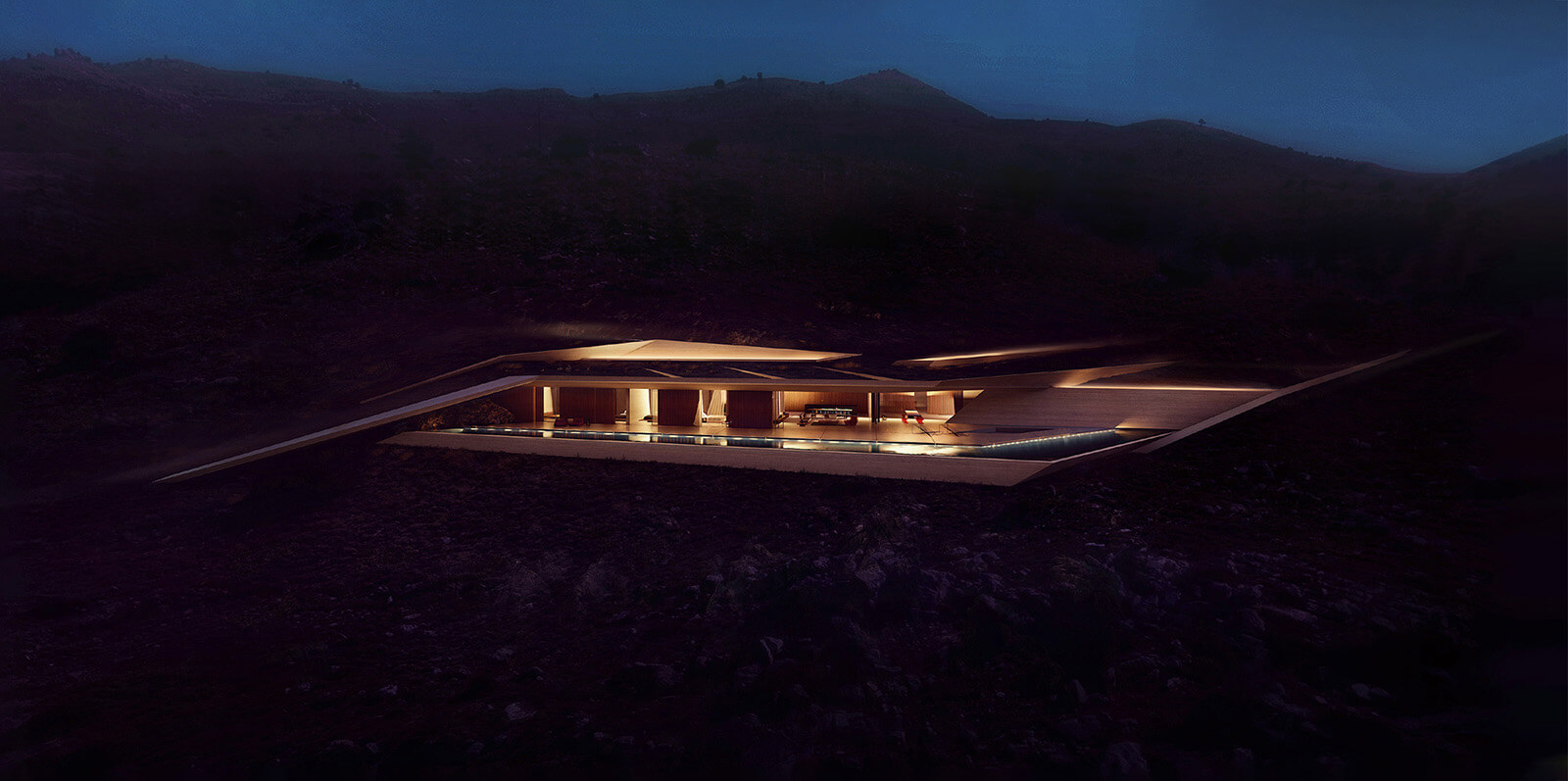

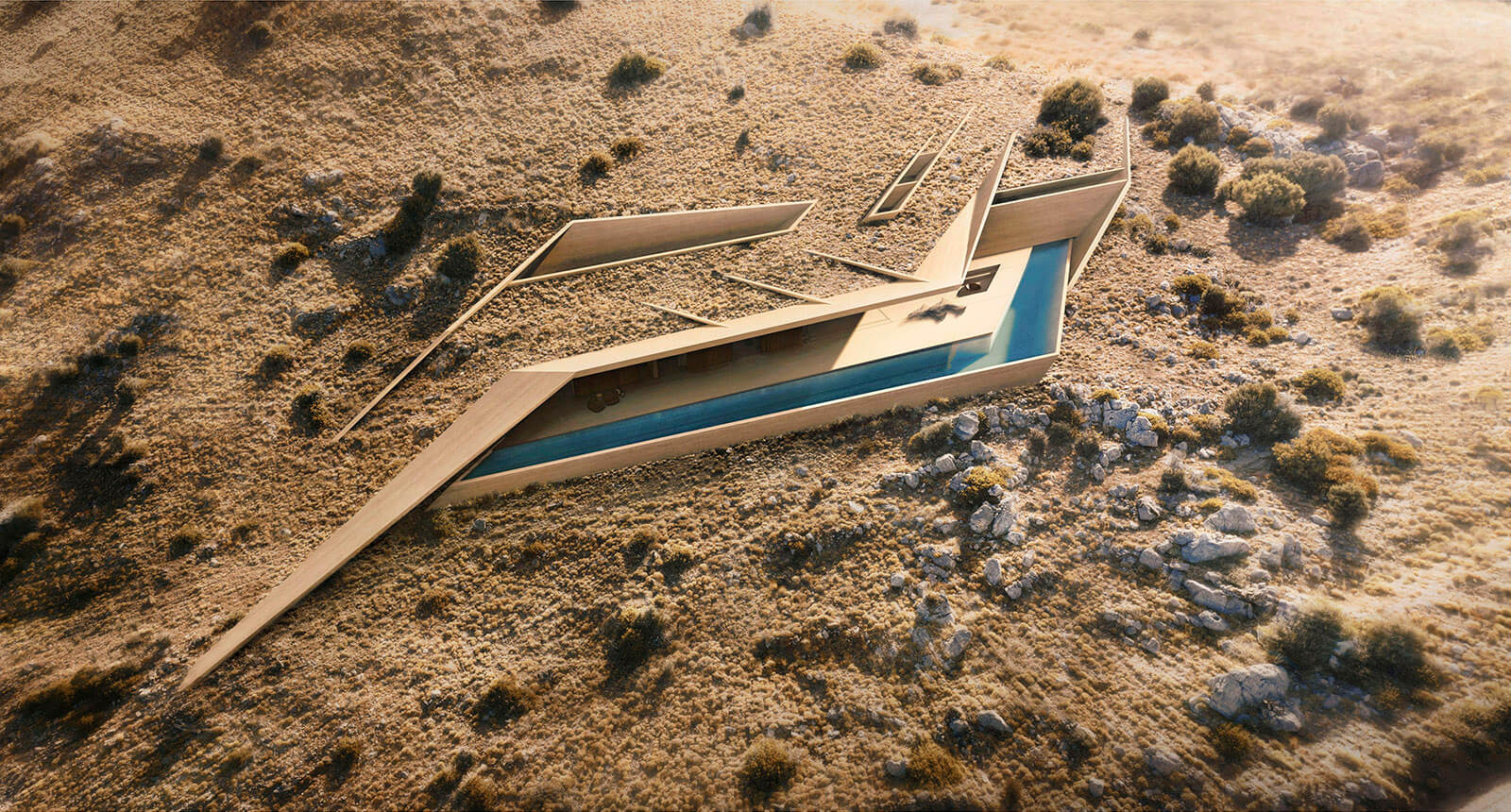

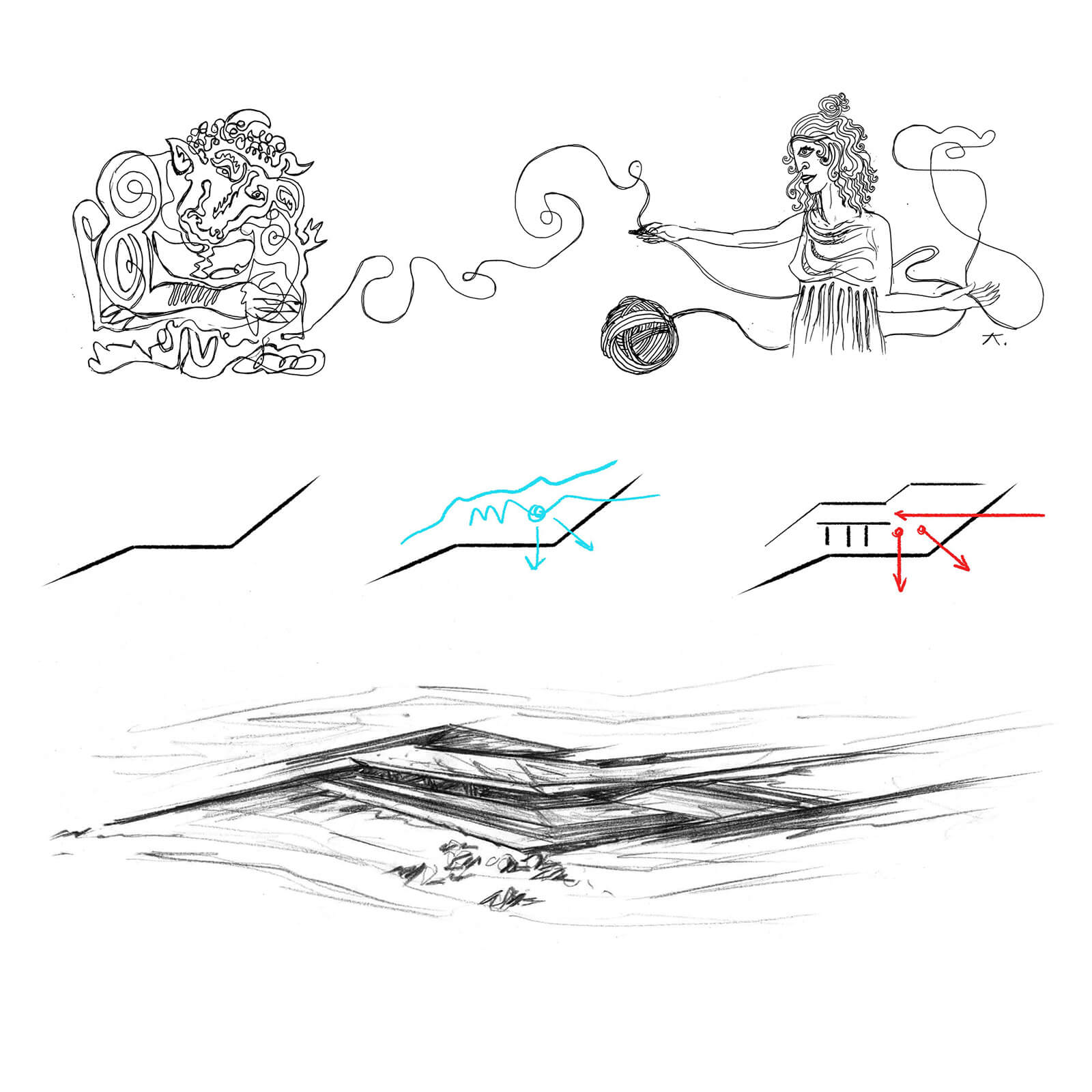
Connect with the KRAK. architects


